Results 10,481 to 10,490 of 12091
Thread: Anandtech News
-
04-01-20, 06:53 PM #10481
Anandtech: Micron to Start Volume Production of 128-Layer 3D NAND with RG Architectur
As part of the company's second quarter financial earnings call, Micron has revealed that it is about to start volume production of its 4th Generation 3D NAND memory devices. Based around the company's new replacement gate (RG) architecture, the memory manufacturer is gearing up to begin production in the current fiscal quarter (Q3'FY20), with commercial shipments set to begin in the fourth quarter. Overall, this will mark the start of a major technology transition for the manufacturer.
As previously detailed by Micron, the company’s 4th Gen 3D NAND features up to 128 active layers and uses replacement gate (RG) technology, which replaces the traditional floating gate technology that has been used by Intel and Micron for years. The switch is a substantial design change, and an important one going forward, as it's at the core of Micron's long-term technology plans. It also happens to be the company’s first flash memory technology in quite some time that has been designed solely by Micron, and not in conjunction with former partner Intel. Micron hopes that switching to gate replacement will enable it to reduce die sizes, lower costs, improve performance, and enable easier transition to next-generation nodes presumably with more active layers.
Micron does not have plans to transit all of its products to its 4th Generation RG-based 3D NAND technology, and it has already warned its investors not to expect a meaningful company-wide cost-per-bit reduction this year as result of this technology transition. Nonetheless, it is tremendously important to kick off volume production as early as possible because learning how to produce replacement gate 3D NAND with decent yields is important for Micron’s subsequent generation 3D NAND that is projected to be deployed broadly in FY2021 (starts in late September, 2020).
Micron said that it plans to start shipments of its 128-layer replacement gate-based 3D NAND products in the fourth quarter of its FY2020, which means this summer. Meanwhile, Micron yet has to disclose which products it plans to build using this technology.
Sanjay Mehrotra, CEO and president of Micron, said the following:
In NAND, we made significant progress on our replacement gate, or RG, transition and expect to begin volume production in our current quarter, with revenue shipments to follow in our FQ4. We expect replacement gate production to be a meaningful portion of our total NAND supply by the end of this calendar year.Related Reading:
- Micron: 128-Layer 4th 3D NAND with RG Architecture Coming Soon
- Samsung Unveils 6th Generation V-NAND Memory with Up to 136 Layers
- Micron Non-Volatile Update (Q2'18): 96L 3D NAND in H2, 4th Gen 3D NAND Enroute, Sales of 3D XPoint Disappoint
- Micron’s Fab 10 Expansion Completed: 96-Layer 3D NAND Production Starts in 2019
- Micron: Shipments of 3D QLC for SSDs Nearly Double QoQ as Wafer Starts Cut Again
Source: Micron
More...
-
04-02-20, 06:33 AM #10482
Anandtech: NVIDIA’s 2020 Laptop Refresh: Launches GeForce RTX 2080 Super, 2070 Super,
With this week marking the launch of AMD’s Ryzen Mobile 4000 APUs and Intel’s Comet Lake-H mobile CPUs, this week is essentially the kick-off point for the next generation of laptops. OEMs and vendors across the spectrum are gearing up to roll out new and updated laptops based on the latest silicon, as they set themselves up for the next year or so of laptop sales.
Not one to be left out, NVIDIA is also using this week’s launches to roll out some new laptop graphics adapters, which partners will be pairing with those new Ryzen and Core processors. The company is also unveiling a rather important set of additions to their laptop technology portfolio, introducing new features to better manage laptop TDP allocations, and for the first time, the ability to have G-Sync in an Optimus-enabled laptop. Overall while this week is primarily focused on AMD and Intel, NVIDIA is making sure that they are giving partners (and consumers) something new for this generation of laptops.
GeForce RTX 2080 Super & RTX 2070 Super
First and foremost, NVIDIA is launching two new mobile graphics adapters this morning. The GeForce RTX 2080 Super and RTX 2070 Super, both of which were launched on the desktop last summer, are now coming to laptops. Like their desktop counterparts, the new adapters are based on NVIDIA’s existing TU104 silicon, so there aren’t any new GPUs to speak of today, but their launch gives OEMs additional options for dGPUs for their high-end gaming laptops.
As has been the case for NVIDIA throughout this generation, while the company doesn’t have distinct, mobile-labeled SKUs, the new laptop parts do have their own set of specifications. Specifically, while the mobile parts have the same CUDA core counts and memory support as their desktop brethren, they have different clockspeed and TDP profiles, owing to the limitations of the laptop form factor. All told, the new Super parts are designed for 80W+ laptops, with the flagship RTX 2080 Super approved for 150W (or more) designs, as vendors get the option to push the adapter just about as hard as they think they can get away with in the luggable desktops we commonly see in the broader market for ultra high powered laptops.
Otherwise, these are fairly typical GeForce RTX SKUs. Boost clocks will range from 1080MHz to 1560MHz, depending on what laptop vendors opt for in terms of power and performance. The RTX 2080 Super will have a fully-enabled, 3072 CUDA core TU104 GPU, while the RTX 2070 Super gets a 2560 core version of the same GPU.
Meanwhile, memory is the only other notable change here: while both adapters come with 8GB of GDDR6 memory, unlike the desktop RTX 2080 Super, the mobile version won’t come with 15.5Gbps GDDR6. Instead, it ships with 14Gbps memory like the rest of the RTX lineup. Overclocked VRAM is rather expensive in terms of power, so it’s not too surprising to see NVIDIA drop it here.
NVIDIA is also using this opportunity to roll out some smaller hardware updates to its laptop portfolio. On the memory front once more, the company has confirmed for the first time that it has been working with memory vendors on low voltage GDDR6 memory. Unfortunately the details here are slim – it’s not clear whether the low voltage RAM NVIDIA is using is any different than the 1.25v GDDR6 already offered by memory suppliers – but even 1.25v would be a notable decrease over normal 1.35v memory. NVIDIA pegs VRAM memory consumption at around 20 to 25 watts for their laptop solutions, so being able to shave off even 10% of that is a couple more watts that can be shifted over to the GPU itself for more performance.
And keeping with the power efficiency theme, NVIDIA tells us that they’ve also been working with partners to get better VRMs in laptops. This is another area where details are quite slim, but VRMs have been an ongoing focus area for the company. Voltage regulation is a game of efficiency – any power you lose is waste heat that eats into a laptop’s thermal budget – so the goal is always to maximize efficiency. Coupled with NVIDIA’s new Dynamic Boost technology (more on that in a moment), the need for more efficient VRMs (particularly high wattage solutions) is at an all-time high.
GeForce GTX 1650 Ti and GTX 1650 (GDDR6) As Well
Alongside their new high-end hardware, NVIDIA is also launching a pair of new low-end SKUs for the mobile space. These are the GeForce GTX 1650 Ti, and a GDDR6 version of the GTX 1650.
The GTX 1650 Ti is a particularly interesting matter, as it has no desktop counterpart. Up until now, NVIDIA has been launching desktop parts first, and then having laptop parts launch in-concert with the desktop parts, or at a later time entirely. But for the GTX 1650 Ti, we have a purely mobile part, at least for the time being.
The hardware itself shouldn’t be too much of a surprise. Here NVIDIA is reusing its TU117 GPU, which is the same GPU that powered the original mobile GTX 1650. The big change here is that the Ti SKU gets much better definition: whereas the regular GTX 1650 has “up to” 1024 CUDA cores and comes with a couple of different memory types, the GTX 1650 Ti is guaranteed to have 1024 CUDA cores as well as GDDR6 memory. Coupled with a slightly higher maximum TDP of 55W, and it should deliver better performance. Though it’s still going to leave a noticeable gap between this fully-enabled TU117 part and the next part up in the stack, the TU116-based mobile GTX 1660 Ti.
Joining the GTX 1650 Ti will be another GTX 1650 SKU, the GTX 1650 with GDDR6. As alluded to in the name, this is a mobile GTX 1650 with GDDR6 memory instead of GDDR5. NVIDIA isn’t outlining any performance figures for the new part, so performance expectations will have to be left up to the reader’s imagination, but at otherwise equivalent specifications, this would be a 50% bump in memory bandwidth, from 8Gbps GDDR5 to 12Gbps GDD6.
However it’s going to be up to laptop vendors to decide what GTX 1650 configuration they’re using, as well as how to disclose it. The GDDR6 version isn’t getting its own canonical SKU name, so a laptop with it could have anything from an 896 core model with GDDR5 to a 1024 core model with GDDR6. Ultimately the minimum configuration hasn’t changed, but laptop OEMs now have another option for a slightly more powerful configuration. Or one could go with the GTX 1650 Ti and skip the uncertainty entirely.
Rebalancing the GeForce Laptop Product Stack
With the addition of the new RTX 2080 Super, RTX 2070 Super, GTX 1650 Ti, and GTX 1650 (GDDR6) adapters to its portfolio, NVIDIA is using this week’s launch to rebalance the entire laptop product stack. As a result, some products are being discontinued, and others are being pushed down in price to fill spots previously covered by other parts.
First and foremost, like the desktop realm, the regular RTX 2080 is now gone from laptops as well. With the RTX 2080 Super taking up the flagship spot – and not being massively different from the original RTX 2080 – NVIDIA has excised the original entirely. The RTX 2070 Super is instead NVIDIA’s second-tier adapter for laptops.
The RTX 2070, on the other hand, is still staying around. Instead, it’s getting pushed down the product stack to the third-tier position. NVIDIA now expects RTX 2070 to start showing up in laptops as cheap as $1199.
The RTX 2060 is also along for the ride. And this one is a particularly notable shift, as the RTX 2060 will now be NVIDIA’s anchor SKU for $999 laptops. This spot was previously held by the GTX 1660 Ti, and while NVIDIA does not explicitly discuss laptop part pricing, reading between the lines it’s clear that the company has cut laptop adapter prices to make this new product stack happen. So, as NVIDIA likes to promote, RTX laptops now start at $999.
In fact of all the new mobile SKUs being launched today, the now lower-priced RTX 2060 is definitely getting the greatest focus from NVIDIA. The company’s OEM partners are announcing 5 new/updated laptops with the part, and the promise of more to come. As in the desktop space, NVIDIA is eager to dislodge its own legacy parts and entice gamers to upgrade to a laptop with a newer GeForce SKU, and while NVIDIA is certainly delivering the goods there, their case isn’t being helped by the relatively stagnant Intel. Thankfully AMD’s new Zen 2-based APUs have just launched, and while the market isn’t going to shift overnight, it gives the Green Team some new performance opportunities with the Black Team (or is that ex-Green Team?).
Finally, the new and updated GeForce GTX 1650 SKUs will be flushing out the low-end of the NVIDIA laptop product stack. The Pascal-based GTX 1050, the last GeForce GTX-branded holdover from the previous generation, is now on its way out. In its place, the GTX 1650 is being shifted down to take over. GTX 1650 laptops, in turn, will be hitting the market for as little as $699. In between that and the RTX 2060 will be the GTX 1660 Ti, as well as the new GTX 1650 Ti. And below $699 we’ll see the usual mismash of last-generation laptops, as well as NVIDIA’s entry-level, non-GTX laptop parts, the GeForce MX3xx series.
Wrapping things up, as with this week’s laptop CPU launches, laptops featuring the new and updated GeForce SKUs are set to hit the market shortly. While the ongoing coronavirus pandemic has thrown a spanner into exact release dates, AMD Ryzen Mobile 4000 laptops are already shipping. Meanwhile, Intel Comet Lake-S laptops should be shipping soon. Accordingly, we’re already seeing ASUS Ryzen laptops shipping with GeForce dGPUs, while Comet Lake-H laptops with the new parts should hit the market in a couple of weeks.
More...
-
04-02-20, 06:33 AM #10483
Anandtech: MSI Launches New 10th Gen Core Laptops With NVIDIA RTX Super And Mini LED
To coincide with today’s launch of both the latest 10th generation Intel Core H-Series parts, as well as NVIDIA’s launch of their new RTX Super laptop GPUs, MSI is announcing a trio of new models to cover a wide-spectrum of the market, with two gaming-focused models in the GS66 Stealth and GE66 Raider, as well as the content-creator focused Creator 17.
GS66 StealthMSI 10th Gen Intel Core Launch Lineup GS66 Stealth GE66 Raider Creator 17 CPU Core i7-10750H
Core i9-10980HKCore i7-10875H RAM 16-32 GB
64 GB MaxGPU NVIDIA RTX 2060 6GB
NVIDIA RTX 2070 Max-Q 8GB
NVIDIA RTX 2070 Super Max-Q 8GB
NVIDIA RTX 2080 Super Max-Q 8GBNVIDIA RTX 2070 8GB
NVIDIA RTX 2070 Super 8GB
NVIDIA RTX 2080 Super Max-Q 8GBNVIDIA RTX 2060 6 GB
NVIDIA RTX 2070 Max-Q 8GB
NVIDIA RTX 2070 Super Max-Q
NVIDIA RTX 2080 Super Max-QDisplay 15.6-inch 1920x1080 144 Hz sRGB IPS-Level
1920x1080 240 Hz
1920x1080 300 Hz15.6-inch 1920x1080 240 Hz
1920x1080 300 Hz17.3-inch 1920x1080 thin-bezel IPS-level 144 Hz sRGB
3840x2160 HDR1000 mini LED 60 Hz P3Storage 512 GB - 1 TB NVMe 512 GB - 2 TB NVMe Networking Intel AX201 Wi-Fi 6
Killer E3100 EthernetKiller AX1650 Wi-Fi 6
Killer E3100 EthernetIntel 9560 WiFi 5
Intel I225 EthernetBattery 99.9 Wh
180-230W slim adapter99.9 Wh
230-280W adapter82Wh
230W Slim adapter
USB-PD chargingPorts Thunderbolt 3 x 1
USB 3.2 Gen 2 x 3
HDMI 2.0USB Type-C Gen2 x 1
USB 3.2 Gen 1 x 2
USB 3.2 Gen 2 x 1
SD Card Reader
SPDIR ESS Sabre HiFI
HDMI 2.0
mDP 1.4Thunderbolt 3 x 1
USB 3.2 Gen2 x 3
micro SD
HDMI 2.0Included 720p Webcam
SteelSeries per-key RGB keyboard
Dynaudio 2Wx2 speakers1080p Webcam
SteelSeries per-key RGB keyboard
Dynaudio Speaker with passive raditor x 2720p Webcam
white backlight keyboard (84-key)
IR camera
fingerprint readerDimensions 14.17 x 9.65 x 0.71 inches 14.09 x 10.51 x 0.92 inches 15.59 x 10.21 x 0.8 inches Weight 4.63 lbs 5.25 lbs 5.29-5.51 lbs Starting Price $1,599 $1,799 $1,799 Available Available April 15
Gaming laptops tend to be flashy affairs, and there is certainly a segment of the market that would prefer the same performance and capabilities, but with a more understated look. Meet the MSI GS66 Stealth. Featuring a sandblasted finish, the all-black GS66 Stealth features a design which does its name proud. This is the ultimate sleeper from MSI. At 4.63 lbs and 0.71-inches thick, the 15.6-inch laptop is also very portable, and despite the small size, MSI has crammed in a 99.9 Wh battery, which is the largest allowed as carry-on in an airplane. The chassis still features the SteelSeries per-key RGB keyboard, which is one of the best in the gaming market, so you can still turn on a bit of bling if you are in the mood.
The GS66 Stealth offers up to a Core i9-10980HK and up to 32 GB of DDR4, expandable to 64 GB. On the GPU side MSI has tapped the brand new NVIDIA GeForce RTX Super lineup as options, with the RTX 2080 Super Max-Q at the top end, RTX 2070 Super Max-Q, RTX 2070 Max-Q, or RTX 2060 options as well. Due to the thin and light design, Max-Q is a necessity despite the new Cooler Boost Trinity+ system which MSI has designed with 0.1 mm fan blades.
MSI has also stepped up to the new 300 Hz display territory with the GS66, although the base model offers “just” 144 Hz, and mid-tier features a 240 Hz 1920x1080p IPS-Level display.
Rounding out the features, MSI offers NVMe storage up to 1 TB, Wi-Fi 6 thanks to the Intel AX201, Ethernet featuring the Killer E3100, USB Type-C with Thunderbolt 3, and three USB 3.2 Gen2 ports.
The new GS66 Stealth is available for pre-order today starting at $1599, and will be shipping on April 15th.
GE66 Raider
If the Stealth was too laid back in the styling department to suit your tastes, don’t worry. MSI has you covered. The new GE66 Raider is a larger, heavier, and flashier version of the GS66 Stealth. The cool-touch aluminum chassis features the MSI Mystic Light panoramic RGB light bar on the front, offering 16.7 million colors. The bottom of the laptop showcases dragon armor carving with hexagons, offering more grip and style, and MSI has tweaked the GE66 Raider’s hinge as well to make it more durable.
If you like really flashy laptops, MSI will be offering a Star Wars themed “Dragonshield Edition”, designed in-part with Industrial Light and Magic veteran Colie Wertz. This theming isn’t just skin deep either. The design is actually laser etched into the laptop, providing contrast and texture.
The GE66 Raider offers much of the same internal offerings as the GS66 Stealth, with up to a Core i9-10980HK, and up to 32 GB of RAM, but thanks to the chassis being a bit thicker (0.92” vs 0.71”) and slightly heavier (5.25 lbs vs 4.61 lbs) MSI was able to skip the Max-Q on the RTX 2070 and RTX 2070 Super, although the top-end offering still needs the Max-Q thermals for the RTX 2080 Super Max-Q.
The 15.6-inch laptop offers either a 240 Hz 1920x1080, or a 300 Hz on the higher-tier models.
This laptop offers the Killer Double Shot feature with the Killer E3100 Gigabit Ethernet coupled with the Intel based Killer AX1650 wireless, and although it offers USB Type-C, unlike the Stealth, there is no Thunderbolt 3 support. This laptop also ships with the same 99.9 Wh battery, so despite the powerful internals, battery life should be reasonable.
The GE66 Raider will be available on April 15th starting at $1799.
Creator 17
MSI has seen a large growth segment in the creator market, and has found that many content creators have been purchasing their gaming laptops to get access to the more-powerful CPUs and beefy GPUs that gaming laptops offer. The company has started to offer models targeted at this crowd now, and their latest model is the Creator 17, which features the first Mini LED display in a laptop.
The 17-inch Creator 17 offers a 144 Hz 1920x1080 IPS panel offering sRGB on the base models, but the top models step up to a 3840x2160 resolution mini LED display, offering P3 color gamut, and HDR1000. The mini LED display offers 240 zones of local dimming, 1000 nits brightness, and a 100,000:1 contrast ratio thanks to the new backlighting. The laptop somewhat surprisingly offers user-choice of both the DCI-P3 as well as the P3 D65 color space. The majority of devices marketed as DCI-P3 are actually P3 D65, whereas the DCI-P3 color space is the one used in digital cinema, so offering both on a device like this is a smart move. In addition to the True Color gamut selection, the laptop will feature per-unit factory calibration which is verified by CalMAN – the same software we leverage for our laptop reviews.
On the CPU side, MSI is only offering the Core i7-10875H, which is an eight-core, sixteen-thread processor which can turbo up to 5.1 GHz. This should offer plenty of muscle for most content tasks, and for GPU-accelerated workflows, MSI will offer the NVIDIA GeForce RTX 2060, RTX 2070 Max-Q, RTX 2070 Super Max-Q, and RTX 2080 Super Max-Q, so you can pick your performance level depending on your GPU needs. The base model ships with 16 GB of DDR4, and MSI offers 32 GB on the higher-tier units, and all models support up to 64 GB.
Creators need storage. MSI is shipping up to 2 TB of NVMe storage, along with micro SD, and for external storage there is a Thunderbolt 3 port. The Thunderbolt port can also be used to charge the laptop in a pinch, and provides 27-Watts of power for charging external devices.
Despite the impressive performance inside, the Creator 17 still comes in at a starting weight of 5.29 lbs, although the mini LED model adds another 0.22 lbs to the total, and the laptop is just 0.8” thick. For a 17-inch laptop, that is quite reasonable.
The MSI Creator 17 will be available on April 15th starting at $1799.
Source: MSI
More...
-
04-02-20, 09:24 AM #10484
Anandtech: NVIDIA Details Dynamic Boost Tech & Advanced Optimus (G-Sync & Optimus At
Alongside this morning’s launch of their new laptop SKUs, NVIDIA is also rolling out a couple of new technologies aimed at high-end laptops. Being placed under their Max-Q banner, the company is unveiling new features to better manage laptop TDP allocations, and for the first time, the ability to have G-Sync in an Optimus-enabled laptop. These new technologies are separate from the new hardware SKUs being launched today – they can technically be built into any future GeForce laptop – so I wanted to touch upon separately from the hardware itself.
More...
-
04-02-20, 11:29 AM #10485
Anandtech: ASUS Launches ROG Strix XG27WQ Curved 165Hz Monitor: FreeSync Premium Pro
AMD’s FreeSync Premium Pro certification promises quite a lot when it comes to features and quality, but unfortunately there are less than a dozen of such displays available on the market today. Thankfully, that market will be getting one more entry courtesy of ASUS, who recently announced its second FreeSync Premium Pro monitor, the ROG Strix XG27WQ. Touting support for superior capabilities, the 27-inch monitor is one of the most feature-packed FreeSync Premium Pro monitors to date, and it promises to be less expensive than some of its larger rivals.
The ASUS ROG Strix XG27WQ monitor relies on a curved 27-inch VA panel with a 2560×1440 resolution. All together, the monitor offers a peak brightness of 450 nits, a 3000:1 contrast ratio, 178°/178° horizontal/vertical viewing angles, a 1 ms MPRT response time, and a 165 Hz maximum refresh rate. The LCD offers one DisplayPort 1.2 inputs and two HDMI 2.0 to connect to its host and also has a dual-port USB 3.0 hub along with a headphone output.
AMD mandates FreeSync Premium Pro (previously FreeSync 2) monitors to support a wide variable refresh rate range (48 – 144 Hz or 48 – 165 Hz in case of the XG27WQ), feature Low Framerate Compensation, be capable of low-latency tone mapping to the monitor’s native color space, meet HDR brightness and and contrast requirements roughly equivalent to DisplayHDR 500, and reproduce at least 90% of the DCI-P3 color gamut (92% in the ROG's case). The capabilities of the ASUS ROG Strix XG27WQ monitor actually exceed AMD’s requirements, which makes it a rather potent choice for gamers.
In addition to VESA’s Adaptive-Sync/AMD’s FreeSync VRR, the display also supports ASUS’s Extreme Low Motion Blur (ELMB) that makes fast-paced scenes look sharper even when a variable refresh rate technology is enabled. The ROG Strix XG27WQ also supports a variety of genre-specific game modes, ASUS's Shadow Boost feature to make dark scenes look brighter, and enhancements like crosshair overlay for easier targeting in FPS titles.
Since we are dealing with an ASUS ROG-branded monitor, the model Strix XG27WQ not only features a stand that can adjust height, tilt, and swivel, but also one that has Aura Sync addressable RGB lighting as well as a projector that projects a logotype onto the table below.
Finally, it's worth keeping in mind that ASUS sometimes formally introduces its products well ahead of their actual release date. As things currently stand, the company has not revealed anything about an actual launch date or pricing for ROG Strix XG27WQ, so it remains to be seen when the monitor will actually hit the streets.The ASUS ROG Strix XG27WQ General Specifications Panel 27" VA Native Resolution 2560 × 1440 Maximum Refresh Rate 165 Hz Response Time 1 ms MPRT Brightness 450 cd/m² (peak) Contrast 3000:1 Backlighting LED Viewing Angles 178°/178° horizontal/vertical Curvature 1500R Aspect Ratio 16:9 Color Gamut 125% sRGB/BT.709
92% DCI-P3DisplayHDR Tier 400 Dynamic Refresh Rate Tech AMD FreeSync Premium Pro
DisplayPort: 48 - 165 Hz
HDMI: 48 - 144 HzPixel Pitch 0.2331 mm² Pixel Density 108 PPI Inputs 1 × DisplayPort 1.2
2 × HDMI 2.0Audio 3.5 mm output USB Hub 2 × USB 3.0 Type-A connectors
1 × USB 3.0 Type-B inputStand Swivel: -50° ~ +50°
Tilt: -5° ~ +20°
Height: 100 mm
VESA: 100x100MSRP ?
Related Reading:
- AMD Announces FreeSync 2: Easier & Lower Latency HDR Gaming
- Dell Rolls Out 32-Inch QHD Curved Gaming Monitor (S3220DGF): Up To 165Hz with FreeSync 2
- HP's Omen X 27: A 240Hz QHD Monitor with FreeSync 2 HDR
- GIGABYTE’s Aorus CV27Q Curved ‘Tactical’ Monitor: 165 Hz QHD With FreeSync 2
- AOC Reveals Agon AG273QX: A 27-Inch 165 Hz FreeSync 2 Monitor
Source: ASUS (via Hermitage Akihabara)
More...
-
04-03-20, 10:24 AM #10486
Anandtech: Razer Refreshes Blade 15 Series With Intel 10th Gen Comet Lake
Along with many other OEMs in the notebook segment at the moment, Razer has joined in the fray with the launch of two new models of its Blade 15 series of gaming notebooks. Building upon Intel's newly announced 10th generation Comet Lake-H processors, both models also include options for using NVIDIA's new RTX Super mobile GPUs.
Starting off with the new flagship Blade 15 Advanced model, Razer claims it to be the world's smallest laptop with with a 15.6" screen, with a weight of just 2.2 Kg. Included in the Advanced model is the new Intel Core i7-10875H eight-core Comet Lake-H processor, with a max turbo of up 5.1 GHz and a base clock of 2.3 GHz. Some of the core features include Intel Thunderbolt 3 Type-C and a USB 3.1 G2 Type-C port supporting USB-C 20 V PD 3.0 charging capabilities. Powering the laptop is a built-in 80 Wh rechargeable lithium-ion polymer battery, with a compact 230 W power adapter which is supplied with both models.
The advanced model is available with a choice between a 300 Hz HD TFT LCD for hardcore gamers, and a more creator-focused OLED 100% DCI-P3 4K touch panel with a 1 ms response time. Powering the display are NVIDIA's current lineup of notebook GPUs, with the top option being the GeForce RTX 2080 Super with 8 GB of GDDR6 memory. As for storage, Razer has equipped the Blade 15 with a PCIe 3.0 NVMe SSDs, with capacities up to 1 TB. Keeping the components cool in the advanced model is a vapor chamber design, while the base model uses a standard heat pipe design.
Meanwhile the base model comes equipped with the six-core Intel Core i7-10750H processor, while the GPU choice goes up NVIDIA GeForce RTX 2070, also using Optimus. Also available with two display types, the base model can come with either a 144 Hz Full HD display with a matte screen or with an OLED 100% DCI-P3 panel. Providing power is a slightly lower spec 65 Wh polymer battery, with Intel Thunderbolt 3 Type-C, an HDMI 2.0B video output, and dual USB 3.1 G1 Type-A ports.
Both models come finished with a black frame with a backlit green Razer logo and are equipped with 16 GB of dual-channel DDR4-2933 memory, benefit from an Intel AX201 Wi-Fi 6 adapter with BT 5.0 support, and include a precision glass touchpad.
Neither variants of the Razer Blade 15 are cheap, with the Basic starting at $1,600, while the Advanced model begins at $2,600. Both models look set to be available in retail channels in May.
Related Reading- NVIDIA's 2020 Laptop Refresh: Launches GeForce RTX 2080 Super, 2070 Super, & GTX 1650 Ti
- Intel Details 10th Gen Comet Lake-H for 45 Notebooks: Up to 5.3 GHz*
- NVIDIA Details Dynamic Boost Tech & Advanced Optimus (G-Sync & Optimus At Last
- MSI Launches New 10th Gen Core Laptops With NVIDIA RTX Super And Mini LED
More...
-
04-03-20, 10:24 AM #10487
Anandtech: The Samsung Galaxy S20+, S20 Ultra Exynos & Snapdragon Review: Megalomania
It’s been a long couple of weeks, but the wait is now finally over. Today we’re ready to go on a deep dive into Samsung’s most important phones of 2020; the new Galaxy S20 series represents a huge jump for the Korean company, and also for the wider smartphone industry. The new devices have a lot of brand-new features premiering for the first time in mainstream flagship devices, and some cutting-edge capabilities that are outright new to the industry as a whole.
The S20 series are probably best defined by their picture capturing capabilities, offering a slew of new camera hardware that represents Samsung’s most ambitious smartphone camera update ever. From a “periscope” design telephoto lens with 4x optical magnification and up to a quoted 100x digital magnification, to a new and humongous 108MP main camera sensor with a brand-new pixel array setup, the new Galaxy S20 Ultra is definitely an exotic device when it comes to its photography features. The new Galaxy S20+ also sees some massive new upgrades, ranging from a new, larger main camera sensor, to the innovative use of a 64MP wide-angle module that allows for high magnification hybrid crop-zooming. Overall it too is a big step-up in the camera department and certainly shouldn’t be overshadowed by its Ultra sibling. The phones are not only the first smartphones able to capture 8K video – but they’re also amongst the first consumer grade hardware out on the market with the capability, which is certainly an eye-catching feature.
The new S20 series are also among the first devices to come with the latest generation of processors on the market, pioneering the usage of the new Snapdragon 865 as well as the new Exynos 990 SoCs. In recent years, it’s always been a contentious topic for Samsung’s flagship phones as the company continues to dual-source the SoCs powering its devices – with some years the differences between the two variants being larger than one would hope for. We have both chipset variants of the Galaxy S20 Ultra as well as an Exynos variant of the S20+ for today’s review, and we’ll be uncovering all the differences between the models.
More...
-
04-03-20, 12:54 PM #10488
Anandtech: SK Hynix: Up to DDR5-8400 at 1.1 Volts
Back in November last year, we reported that SK Hynix had developed and deployed its first DDR5 DRAM. Fast forward to the present, and we also know SK Hynix has recently been working on its DDR5-6400 DRAM, but today the company has showcased that it has plans to offer up to DDR5-8400, with on-die ECC, and an operating voltage of just 1.1 Volts.
WIth CPU core counts rising with the fierce battle ongoing between Intel and AMD in the desktop, professional, and now mobile markets, the demand to increase throughput performance is high on the agenda. Memory bandwidth by comparison has not been increasing as much, and at some level the beast needs to be fed. Announcing more technical details on its official website, SK Hynix has been working diligently on perfecting its DDR5 chips with capacity for up to 64 Gb per chip.
SK Hynix had previously been working on its DDR5-6400 DRAM, which has 16 Gb which is formed of 32 banks, with 8 bank groups, with double the available bandwidth and access potential when compared with DDR4-3200 memory. For reference, DDR4 uses 16 banks with 4 bank groups. The key solution to improve access throughout is the burst length, which has been doubled to 16 when compared with 8 on DDR4. Another element to consider is DDR4 can't by proxy run operations while it's refreshing. DDR5 is using SBRF (same bank refresh function) which allows the system the ability to use other banks while others are in use, which in theory improves memory access availability.
As we've already mentioned, SK Hynix already has DDR5-6400 in its sights which are built upon its second-generation 10nm class fabrication node. SK Hynix has now listed that it plans to develop up to DDR5-8400. Similar in methodology to its DDR5-6400 DRAM, DDR5-8400 requires much more forethought and application. What's interesting about SK Hynix's DDR5-8400 is the jump in memory banks, with DDR5-8400 using 32 banks, with 8 bank groups.
Not just content at increasing overall memory bandwidth and access performance over DDR4, the new DDR5 will run with an operating voltage of 1.1 V. This marks a 9% reduction in DDR4 operating voltage which is designed to make DDR5 more power-efficient, with SK Hynix reporting that it aims to reduce power consumption per bandwidth by over 20% over DDR4.
To improve performance and increase reliability in server scenarios, DDR4-8400 will use on-die ECC (Error Correction) and ECS (Error Check and Scrub) which is a milestone in the production of DDR5. This is expected to reduce overall cost reduction, with ECS recording any defects present and counts the error count to the host. This is designed to improve transparency with the aim of providing enhanced reliability and serviceability within a server system. Also integrated into the design of the DDR5-8400 DRAM is Decision Feedback Equalization (DFE), which is designed to eliminate reflective noise when running at high speeds. SK Hynix notes that this increases the speed per pin by a large amount.
In the above image from specification comparison between DDR4 and DDR5 from SK Hynix, one interesting thing to note is that it mentions DRAM chips with density up to 64 gigabit. We already know that the chip size of DDR5 is 65.22mm², with a data rate of 6.4 Gbps per pin, and uses its 1y-nm 4-metal DRAM manufacturing process. It is worth pointing out that the DDR5-5200 RDIMM we reported on back in November 18, uses 16 Gb DRAM chips, with further scope to 32 Gb reported. SK Hynix aims to double this to 64 Gb chips which do double the density, at lower power with 1.1 volts.
Head of DRAM Product Planning at SK Hynix, Sungsoo Ryu stated that:
"In the 4th Industrial Revolution, which is represented by 5G, autonomous vehicle, AI, augmented reality (AR), virtual reality (VR), big data, and other applications, DDR5 DRAM can be utilized for next-gen high-performance computing and AI-based data analysis".SK Hynix if still on schedule with the current Coronavirus COVID-19 pandemic, looks set to enter mass production of DDR5 later this year.
Related Reading- Cadence DDR5 Update: Launching at 4800 MT/s, Over 12 DDR5 SoCs in Development
- Samsung to Produce DDR5 in 2021 (with EUV)
- Here's Some DDR5-4800: Hands-On First Look at Next Gen DRAM
- SK Hynix Details DDR5-6400
- CES 2020: Micron Begins to Sample DDR5 RDIMMs with Server Partners
More...
-
04-03-20, 12:54 PM #10489
Anandtech: Folding@Home Coronavirus Race, AnandTech vs. Tom’s Hardware: Two Week Chec
As many of us are stuck at home these days and are slowly quickly going mad, a couple of weeks ago we kicked off a race of sorts with our loyal opposition, Tom’s Hardware. Challenging each other to put an end to the very thing that’s keeping us at home – the novel coronavirus SARS-CoV-2 – we have been racing to see which team can contribute the most work towards the Folding@Home project’s coronavirus distributed computing research efforts. The popular project has already passed an exaFLOP per second in compute performance thanks to Team AnandTech, Tom’s Hardware, and numerous other contributors over the world, and there is still much work to be done for its important research tasks.
Meanwhile, as we’re now at just past the half-way point in our four-week race, I wanted to stop and take stock of things. To see how the humble Team Anandech was faring against the boastful brutes that are the Tom’s Hardware team. And after two weeks, it looks like things are coming up great for Team AnandTech.
Since the race started on March 18th, Team AnandTech has generated 2.45 billion points in work for the Folding@Home project. In the same time period, the Tom’s Hardware team has generated a sizable, but not quite as massive 2 billion points of work. This has put Team AnandTech 445 million points ahead of Tom’s Hardware, or to put this in terms of the ongoing rate, Team AnandTech has been turning in 1.2 points’ worth of work for every point that Tom’s Hardware turns in. Which in the big picture, is actually a rather close race.
As such, with two weeks to go, this race is far from over. Our loyal competition could still turn things around, and so Team AnandTech cannot rest on its laurels. That means we still need you! Both to help Team AnandTech cross the finish line, and to hopefully get out of our homes just that much sooner.
So please stop by the AnandTech Distributed Computing forum to see how you can download the Folding@Home client and join Team AnandTech.
Ultimately this race is for fun, but it’s also for a good cause. The SARS-CoV-2 virus is a world-changing event, and, along with the immediate medical risks of the virus, the containment measures it requires are intense. The Folding@Home project is working on several simulations to improve humanity’s understanding of the virus and the disease it causes, with a goal of jump-starting new treatments and to bring the virus under control. It’s a worthy cause, as a result I’d like to encourage everyone to take part in what’s left of our race over the next two weeks.
Carousel Image Courtesy of: CDC/Alissa Eckert, MS
Gallery: Folding@Home Coronavirus Race, AnandTech vs. Tom’s Hardware: 2 Week Check-In

More...
-
04-06-20, 07:35 AM #10490
Anandtech: AMD Drops StoreMI Software; Developing New Software for Later This Quarter
In a blink-and-you’ll-miss-it moment, AMD quietly dropped distribution and support for the company’s StoreMI software at the start of this month. The technology, launched back in 2018, was AMD’s answer to Apple’s Fusion Drive and other hybrid drive programs that allow a SSD and a HDD to be merged into a single logical volume. However it looks like AMD has decided to take a different direction with their hybrid drive efforts, as the company has dropped the software in favor of another program that’s expected to be launched this quarter.
In a product change advisory published to their website last month (but only noticed recently), AMD announced that they would be halting the distribution of and support for the StoreMI software. The software itself would continue to work, but starting March 31st, but AMD wouldn’t be providing the means for any new installations after that date, nor would they be providing support.
A relatively clean break like this is rather uncommon for most CPU vendor software, but given what we know about StoreMI, it’s not too surprising. StoreMi came out of an existing relationship between AMD and Enmotus, a software developer who had already created their similar FuzeDrive software that AMD was, for a time, recommending for use with their systems. So while it’s ultimately an internal matter for AMD, it looks like the company has decided to wrap up their relationship with Enmotus – which would mean that AMD would no longer have the rights to distribute the software.
In its place, the PCA reveals that the company is “focus[ing] its internal development resources on a replacement solution,” which is set to be released this quarter. The fact that AMD is explicitly noting the use of “internal” resources, in turn, strongly suggests that whatever the company is working on, it’s an in-house solution rather than a licensed solution like StoreMi. Which means AMD has presumably started from scratch here, but it would also be a lot cleaner with respect to ownership and all the associated issues that come with it (StoreMi famously only allowed SSD partitions up to 256GB, in order to not undermine Enmotus’s commercial software).
At any rate, barring any delays, we should be seeing the fruits of AMD’s software labors in the next couple of months.
Source: AMD (via Guru3D)
More...
Thread Information
Users Browsing this Thread
There are currently 18 users browsing this thread. (0 members and 18 guests)





 Quote
Quote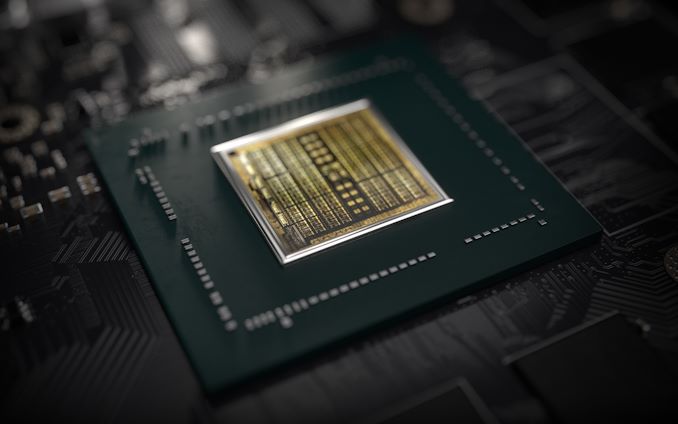
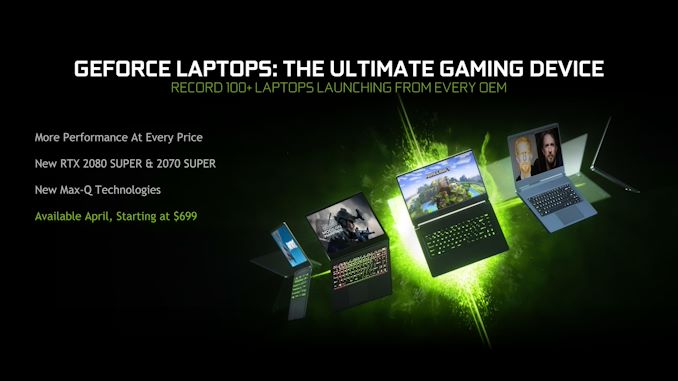
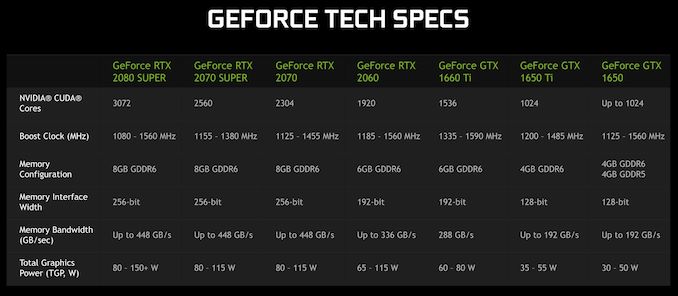
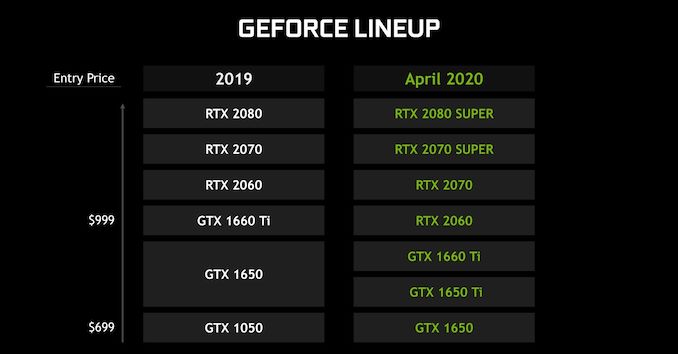
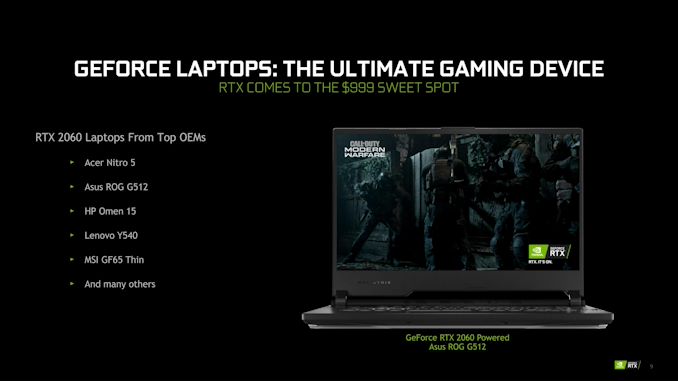
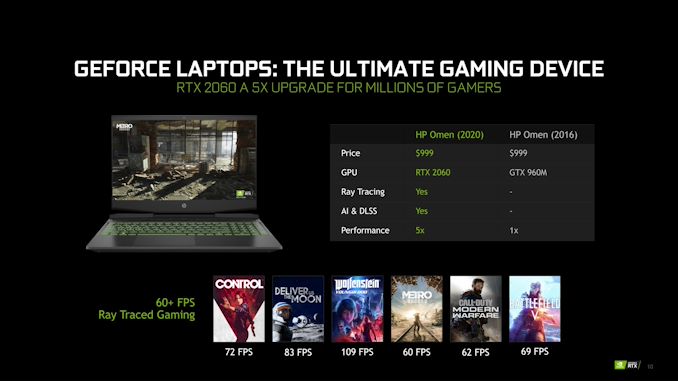
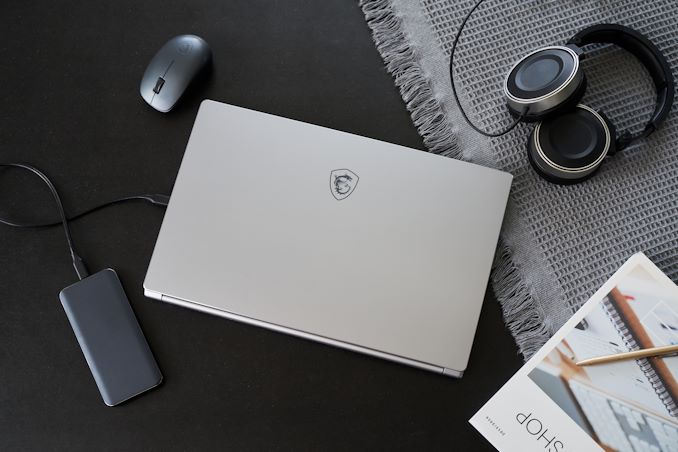
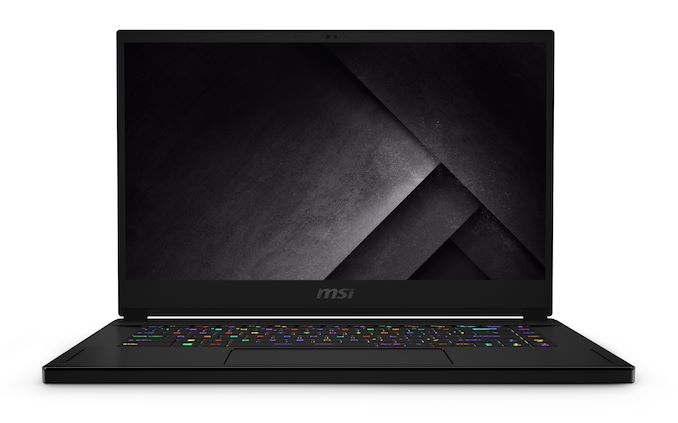
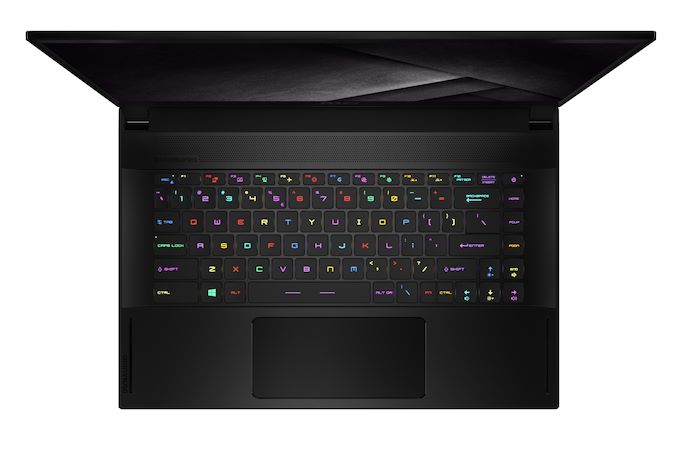
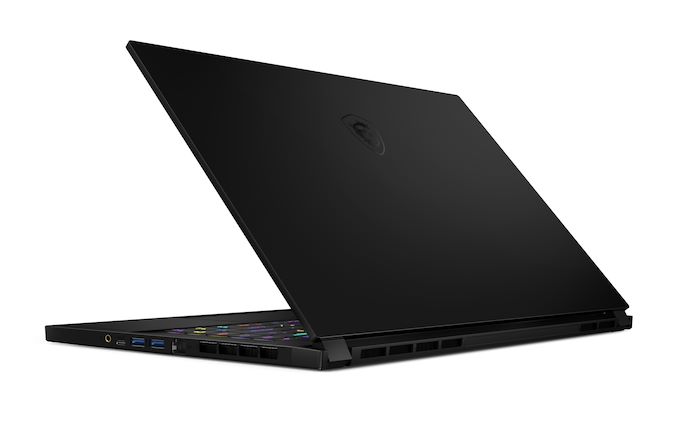
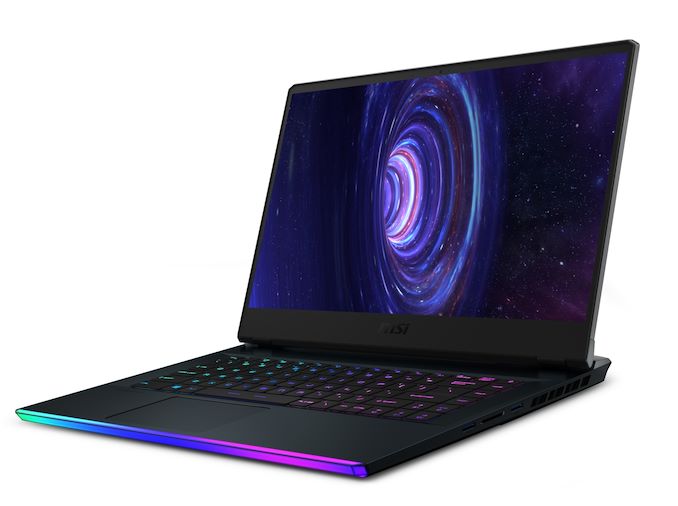
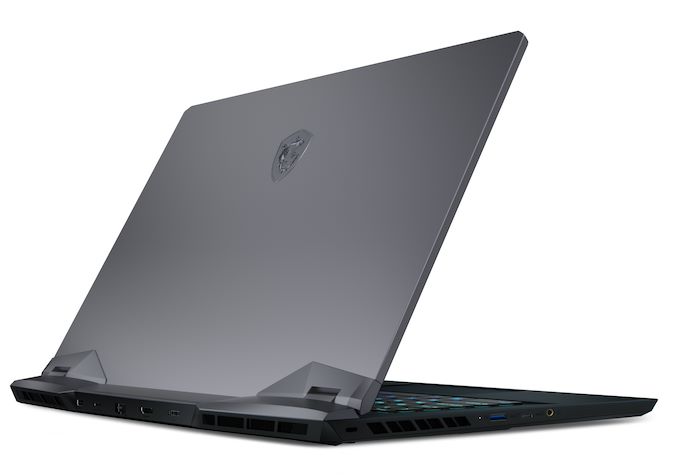
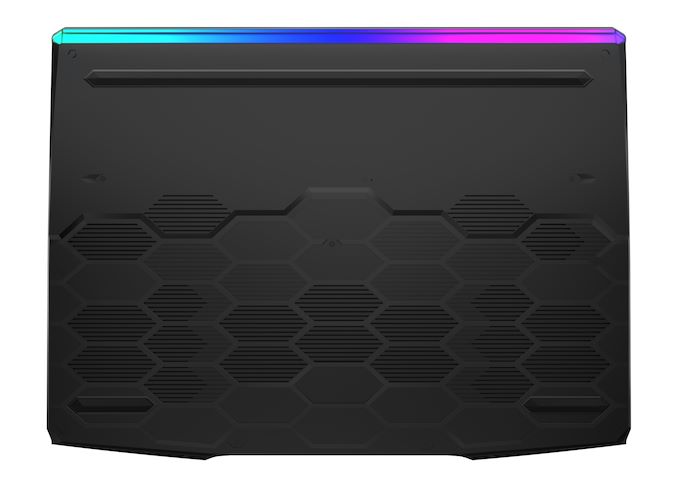
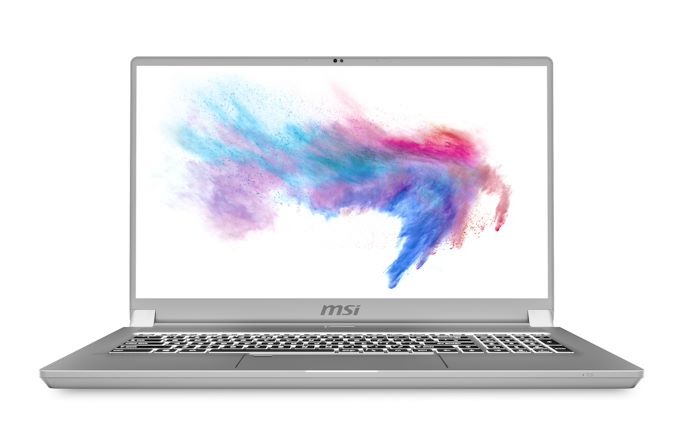
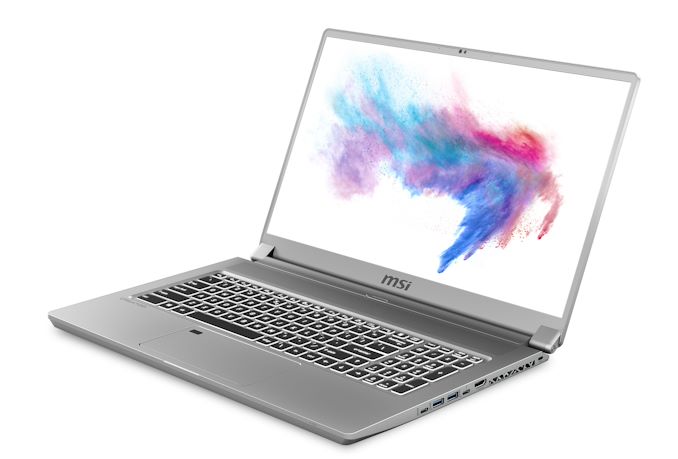


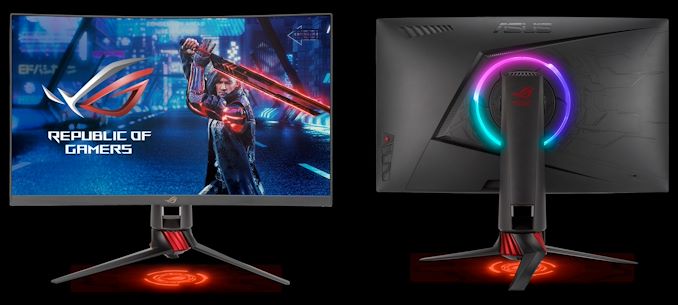
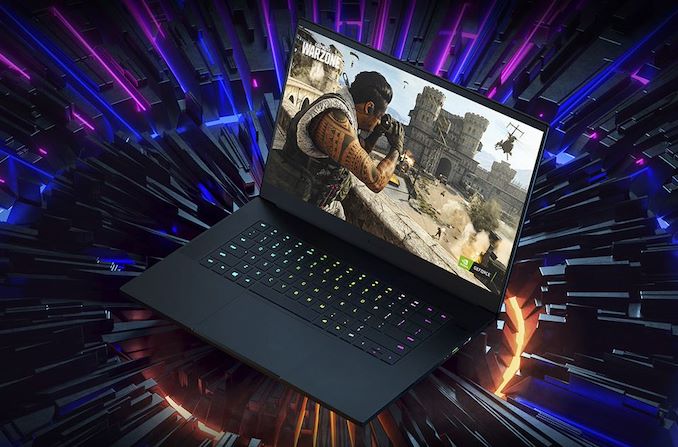

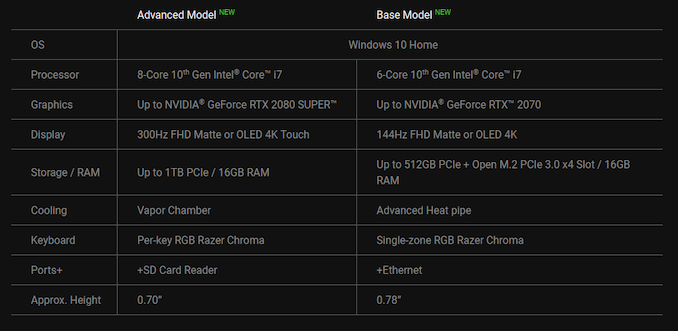
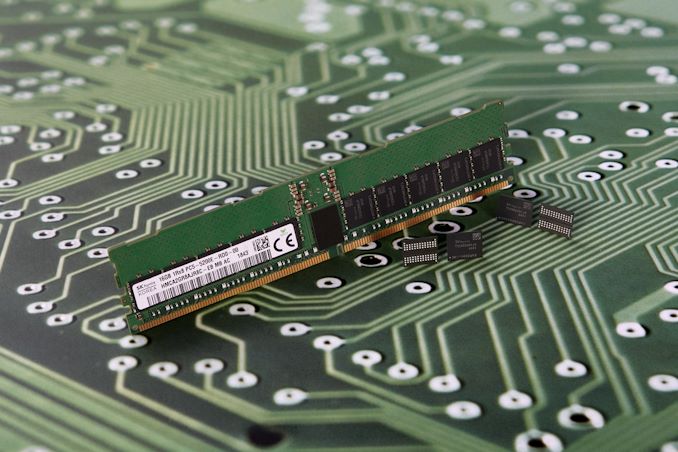
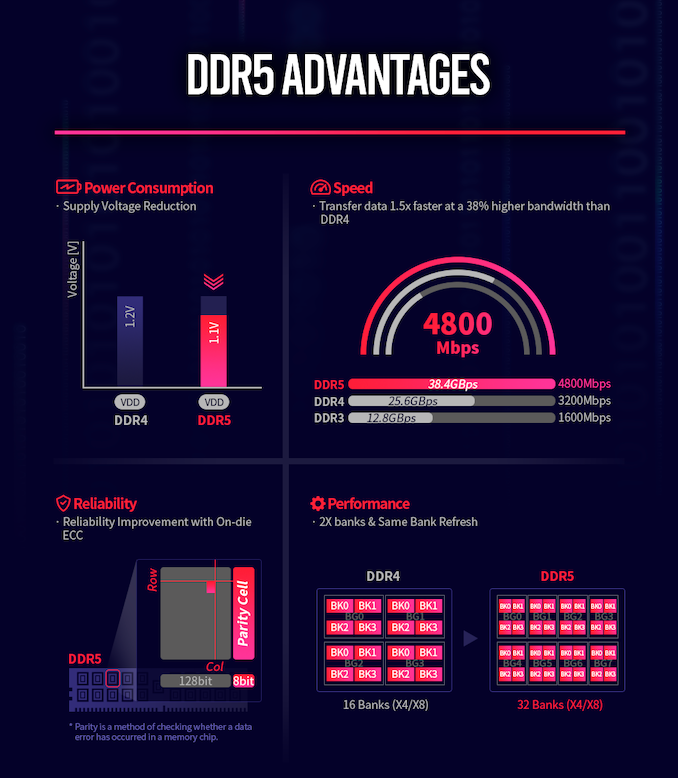
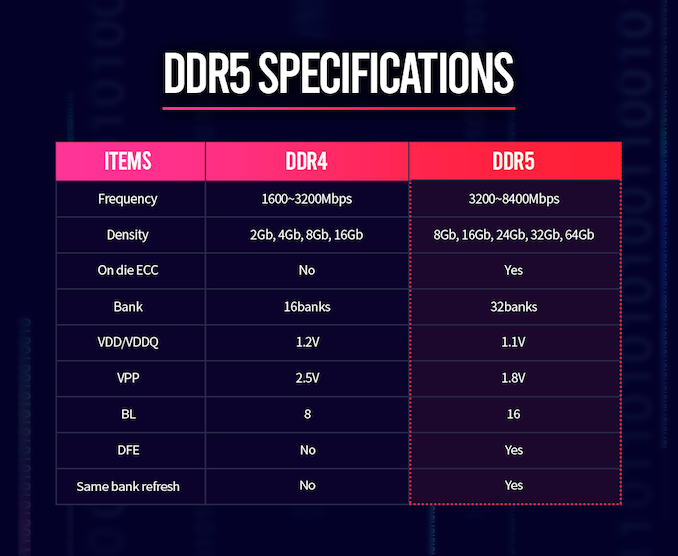


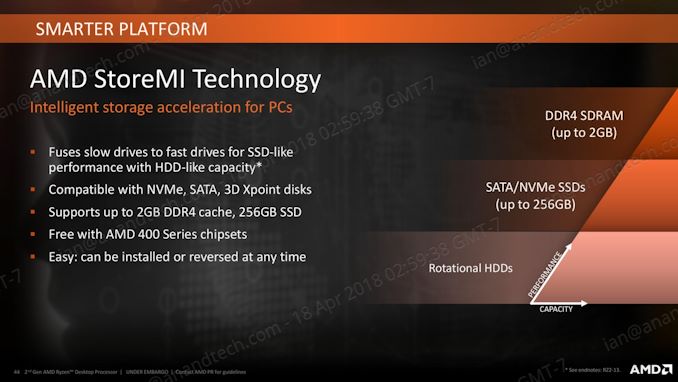
















Bookmarks